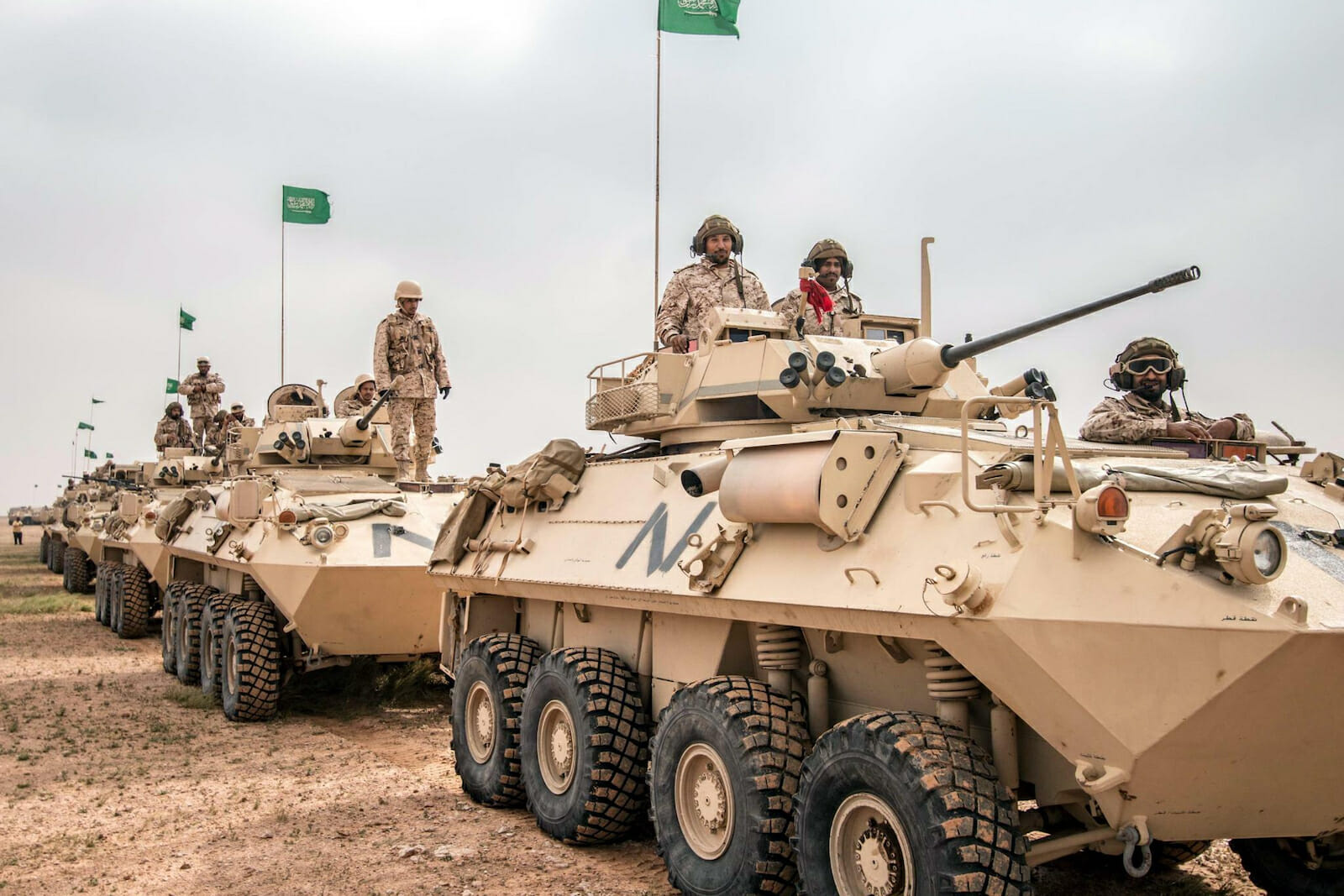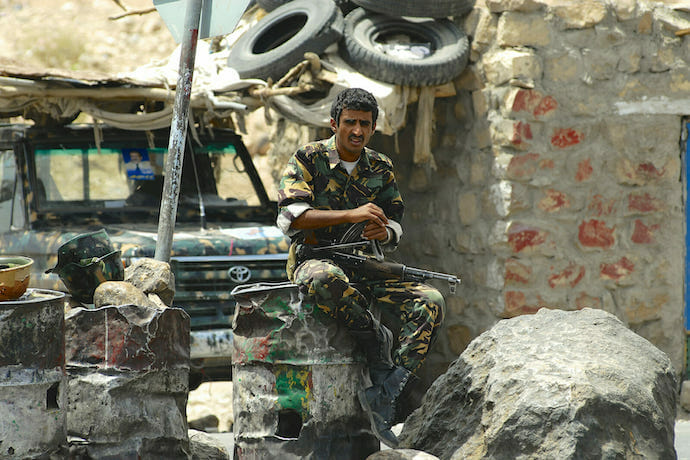
Between Confidentiality and Transparency: Arbitration and Arms Transfers
The sales of military equipment is a global industry known for its high degree of secrecy. After all, armed forces do not want potential adversaries to know what kind of equipment they are buying, the technical aspects of said systems, how many systems/platforms are being acquired and other details about military equipment that could jeopardize national security. Similarly, arbitration is meant to be confidential, that is what makes this legal process more attractive to clients than going to courts of law, which will make rulings public.
A 2018 WikiLeaks dump of thousands of sensitive documents, including many from the International Chamber of Commerce (ICC), provided a glimpse of the amount of money that is involved in many defense agreements, and other sensitive information that is meant to be known only by the parties involved and the arbitrators of the case.
The war in Yemen
The arbitration case that we will focus on in this analysis was held at the ICC between GIAT Industries (now called Nexter Systems), a French defense company, and the Emirati businessman Abbas Ibrahim Yousef Al Yousef. This legal process was meant to remain confidential, but WikiLeaks had other plans.
In order to understand how we got here, let us briefly summarize the situation. The Yemeni military commenced a new offensive against Houthi rebels in 2009, in the Northern Saada province; two years later, long-time President Ali Abdallah Saleh relinquished power in favor of his deputy, Abdrabbuh Mansour Hadi after months of protests. The Houthi-government conflict intensified in 2015, when the Islamic State increased its presence in the country, “two suicide bombings targeting Shia mosques in Sanaa, in which 137 people [were] killed,” explains the BBC. In response to the growing violence in another of its neighbors, Saudi Arabia created a coalition of Gulf states and other allies to crack down on Houthi rebels. Airstrikes and other operations carried out by the coalition have killed not only rebels, but also civilians, exacerbating the crisis in Yemen.
This is where GIAT/Nexter comes into the scene. Back in the 1990s, GIAT sold its Leclerc tanks to the UAE military, and the aforementioned Al Yousef was involved in this transaction – we will summarize the case in the next section. Photos posted in social media, as well as videos (in this video a Leclerc tank is confused for an Abraham M1 Abrams tank), show what appear to be Leclerc tanks operating in Yemen in 2015.
The fact that the systems in question were utilized in controversial Yemeni conflict made the GIAT-Al Yousef dealings even more newsworthy.
Summary of the case
As for the ICC case, the 2009 dispute involved an agreement between Kenoza, a company owned by Al Yousef, and GIAT, whereby Kenoza was tasked to market and sell to the UAE government a total of 388 Leclerc combat tanks, spare parts, and ammunition produced by the French arms manufacturer for a commission of 6.5% ($235 million ) of the $3.6 billion contract price.
The GIAT successfully concluded a contract with Abu Dhabi for the supply of the aforementioned equipment, the French entity paid a total of $195 million to Al Yousef by 2000 but did not pay the remaining $39,755,339 million of the commission, alleging that the amount was too excessive. Moreover, the Respondent (the French entity) claimed that the ‘surprisingly short’ time period in which the Agent [Al Yousef] facilitated the conclusion of sales agreement suggests that the money was used for bribing the officials of the UAE government. Thus, the Respondent ceased the payment as such a contract had an ‘illicit cause’ and was contrary to public morality.
In justifying the excessive price of the commission, the Agent (Al Yousef) explained that “by that time the Leclerc tank was a new concept ‘effectively a paper project’” and it was a challenge “selling something that existed only on paper.” Moreover, in his witness statement, he mentioned that what made the Leclerc tanks more competitive than those of other competitors was its German-made engine. However, at that time (the 1990s) Germany had imposed a ban on arms sales to the Middle East; hence Al Yousef argues that he “undertook the lobbying of the German authorities and was instrumental in ensuring that the necessary approval or waiver was obtained, a process which involved decision-makers at the highest levels in both France and Germany.”
With regard to corruption allegations, the ICC Tribunal noted that although it does not exclude the possibility that the commission payments were utilized for corrupt or other illicit purposes, there is not enough evidence to make such a far-reaching conclusion merely on the basis of the size of the agreed remuneration. Hence, the Tribunal left that dispute undecided.
On the other hand, the Tribunal did rule that the contract price is indeed “excessive by the standard which Mr. Al Yousef himself set and by any standard which was raised in this arbitration.” Moreover, the Tribunal noted that in proportion to the services rendered and the risk that Mr. Al Yousef undertook the reasonable remuneration earned by the Claimant is well below the contractual amount.
Therefore the Tribunal decided that the Claimant’s (Al Yousef) compensation must be reduced to an undetermined amount below $195 million and that the claims for further payments must be dismissed in all of its variants.
The Expensive Global Weapons Market
To those of us who work in the defense business, the GIAT-Yousef-UAE deal is not surprising. Case in point, the Stockholm International Peace and Research Institute (SIPRI) reported in an April 2019 Fact Sheet that “global military expenditure was $1,822 billion in 2018, an increase of 2.6 percent from 2017 in real terms,” and that “total military spending accounted for 2.1 percent of global gross domestic product in 2018.” In other words, the amounts of money that are exchanged in these deals are tremendous.
The world’s top five biggest spenders in 2018 were the United States, China, Saudi Arabia, India, and France. Since the GIAT case involves the UAE, this is what SIPRI says about this country’s defense expenses, “the most recent available estimate for military spending by the UAE is $22.8 billion (current US dollars) in 2014. Considering its ongoing military operations abroad and large arms procurement projects, it can be assumed that its spending remains at or above the 2014 level.” In fact, the country has continued to acquire and upgrade equipment in recent years. For example, in November 2019, Jane’s reported that “the United Arab Emirates’ (UAE’s) Pantsir-S1 air defence systems are being upgraded.”

As for France, the European nation is a well-known producer of military technology. Just to name one example, Naval Group (formerly known as DCNS) is helping Brazil manufactured Scorpene-class diesel-electric attack submarines for the Brazilian Navy. The shipyard is also in the process of delivering four offshore patrol vessels to Argentina.
For the record, Nexter (formerly GIAT) is also a well-established supplier of defense equipment. For example, Jane’s reported in January that the company, in association with ECA, are delivering Nerva LG unmanned ground vehicles (UGVs) for France’s Scorpion program. The company is currently also competing for a contract for 150 new wheeled infantry fighting vehicles (IFVs) for the Bulgarian armed forces. Even more, the company is teaming up with another global powerhouse of the defense industry, Thales, to “develop a new multi-role weapon system, called RAPIDFireNaval, to meet potential French Navy requirements and are eyeing DGA funding in the first half of 2020.” In other words, the WikiLeaks revelations have not damaged Nexter’s image.
Confidentiality v. transparency in the weapons trade
An eternal debate when it comes to weapons transfers has to do with how much information should be made public about such deals; to put it another way, the key is figuring out how to strike a balance between confidentiality and transparency. Defense ministries and armed forces tend not to disclose many details about agreements and the specific characteristics of the equipment in question. After all, the armed forces of country X do not want to alert the armed forces of country Y (or criminal entity Z) what kind of equipment X is getting, particularly if it will be used against Y or Z. Therefore, the confidentiality of the systems that will be transferred is quite important.
Similarly important is the secrecy of the cost of the contract. While an agreement may have a good price, from the buyer’s perspective, such information can also be misinterpreted or misused. It is very common, for example, that opposition politicians will criticize an incumbent government’s arms transfers, labeling them as an unnecessary waste of money that could be utilized to build roads, schools or other infrastructure.
On the other hand, the citizens of a state have the right to know how their government is utilizing state funds. Hence transparency is necessary in order to fight corruption and other illegal practices, and to generally better understand what civilian policymakers and military leaders regard as a country’s major defense and security threats, and what are they doing to combat them. To be fair, many states do strive to promote transparency when it comes to being open about bids for new equipment, which providers are competing for a contract, and how the equipment will be utilized. For example, the US Defense Security Cooperation Agency publishes contracts regarding major sales to US allies and partners.
Moreover, several non-governmental entities are devoted to shedding light to weapons transfers, such as the aforementioned SIPRI, the Small Arms Survey (which has done great work on the export of light weapons) and the Forum on the Arms Trade, a “network of civil society experts and a point of contact for strengthening public efforts to address the humanitarian, economic and other implications of arms transfers, security assistance, and weapons use.”
A final factor to keep in mind is the problem of human rights, and ensuring that weapons transferred from entity X (a government or company) to client Y will not be utilized to commit human rights violations – one obvious example are attempts to stop the sale of U.S. weapons to Saudi Arabia and the UAE, which could be utilized to kill civilians in Yemen.
It is beyond the scope of this analysis to figure out how much transparency should there be when it comes to weapons transfers, and how much information should remain confidential as it may affect a country’s national security. The point here is that this is a source of continuous debate and concern. Hence, arbitration has become a popular legal framework where parties can find a resolution for weapons transfers-related disputes, as it provides the confidentiality that parties, particularly those in the defense field (armed forces, state officials and industry) prefer.
Transparency in the ICC’s Arbitration Procedures
In 1995 Stephen R. Bond, the former secretary-general of the Court of International Arbitration, part of the International Chamber of Commerce (ICC), stated that “indeed it became quickly apparent to me that should the ICC adopt a publication policy or any other policy, which would mitigate or diminish the strict insistence on confidentiality by the ICC, this would constitute a significant deterrent to the use of ICC arbitration.”
While it is true that parties choose arbitration because they seek confidentiality and privacy, recent developments show that international institutions acknowledge the need for more transparency. Case in point, the ICC announced that as of January 2019 the International Arbitration Court’s awards will be published. Although they did not come as an amendment to the ICC Arbitration Rules but via a Note To Parties And Arbitral Tribunals On The Conduct Of The Arbitration Under The ICC Rules Of Arbitration, the new changes state that unless parties opt-out from publication, the default rule is that the awards will be published two years after their notification to the parties.
Furthermore, where there is a confidentiality agreement between the parties, the publication will be subject to the parties’ consent. Yet even absent such an agreement, parties may easily object before the publication without any obligation to state the reasons. Moreover, pursuant to the Note, the Secretariat reserves the right to have the discretion to publish awards that contain sensitive information.
Therefore, the IC has acknowledged that the International Court of Arbitration aims to achieve more transparency in its practices In this sense, the pro-publication approach serves as an instrument to achieve this objective. However, the success of said objective will continue to depend on the parties’ discretion.
It is expected that in matters such as weapons transfers and other defense issues, parties, in particular, state entities, will be more prudent and will opt for confidentiality. Hence, it should come as no surprise that these parties will either conclude a confidentiality agreement or will object to the publication of the award.
Why is the confidentiality v. transparency issue of public interest?
ICC arbitration is often utilized by states and state entities. According to a 2015 report, approximately 10 percent of ICC arbitrations involve a state or a state entity. The issue of confidentiality plays a great role when both parties of the dispute are commercial entities that care about their reputation, privacy, business strategy, and business partners. However, when one of the disputing parties is a state entity, the dispute becomes of a public nature, involving public interest and therefore may require more openness and transparency.
To mimic the previous section regarding weapons transfers, it is indisputable that citizens have the right to be informed about the disputes in which their respective government is involved. In this situation, the state may have a duty to disclose to a certain extent, information about the dispute.
The problem is, however, when the arbitration agreement between a state entity and a private contractual counterparty includes a confidentiality clause or when parties conclude a separate confidentiality agreement. In this scenario, how will citizens, public interest groups and/or NGOs find out about the existence of any disputes?
Ultimately, transparency must be consensual since, even if the state agrees that any matter will be open to the public domain, it is possible the private contractual counterparty may oppose it.
Conclusions
This analysis has discussed the issue of transparency versus confidentiality in two major industries, arms transfers, and arbitration: the two generally prefer the latter over the former. Even though many governments and militaries are striving for greater transparency when it comes to acquiring new equipment, details of several transfers remain confidential in the name of national security. Likewise, secrecy is a key reason why arbitration is preferred over litigation, though, as we have discussed, there is an ongoing intention to bring more transparency, within certain parameters, to arbitration via the publication, to a certain extent, of the arbitral awards.
The revelations of the GIAT-Al Yousef-UAE deal and arbitration process via the 2018 WikiLeaks dump was an event of force majeure that shone unexpected light to arbitration proceedings in defense issues. The question is, how much more transparent can these industries become in the new decade while maintaining an efficient degree of confidentiality.
The views expressed in this article are those of the authors alone and do not necessarily reflect those of any institutions with which the authors are associated.


